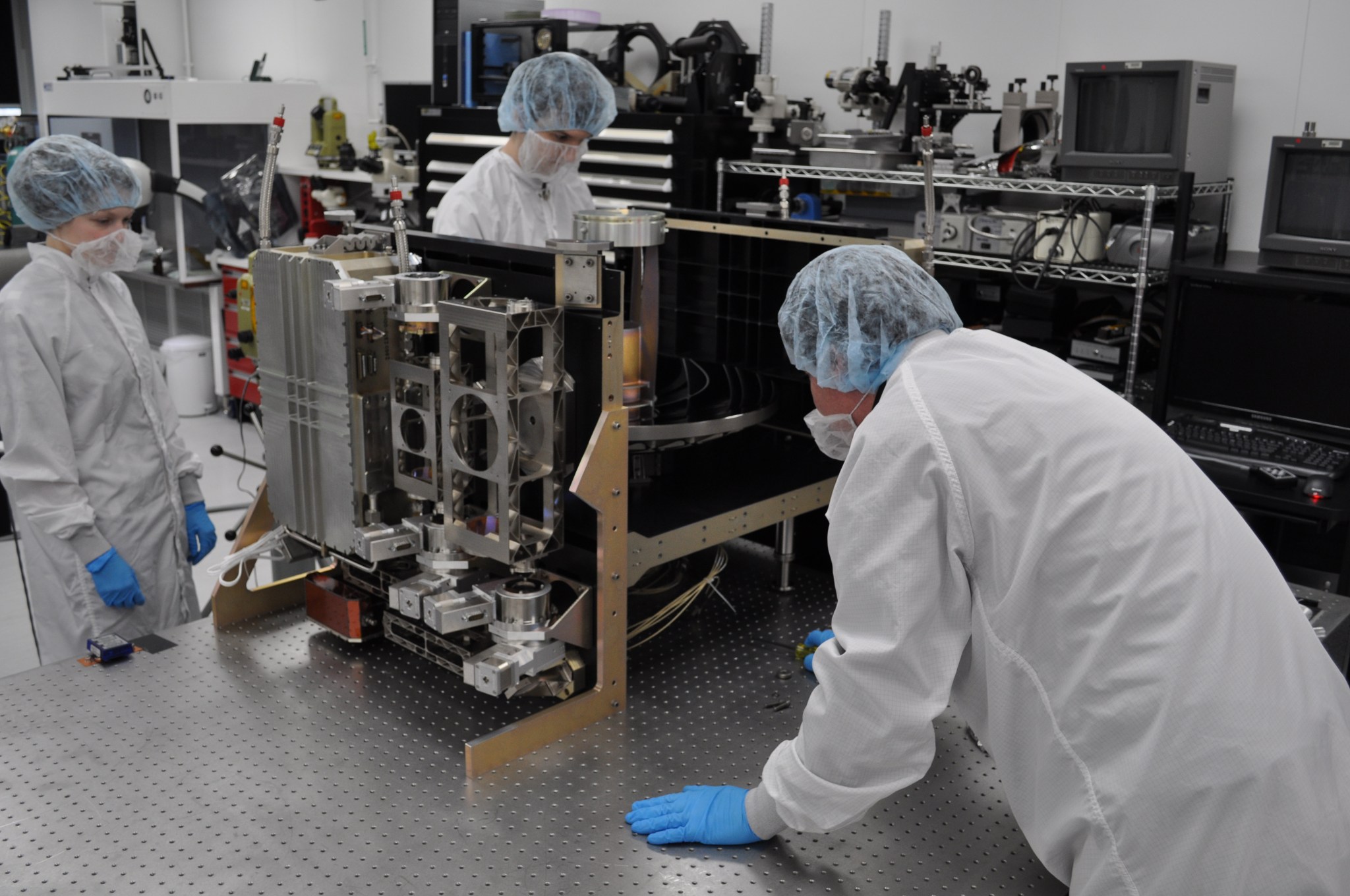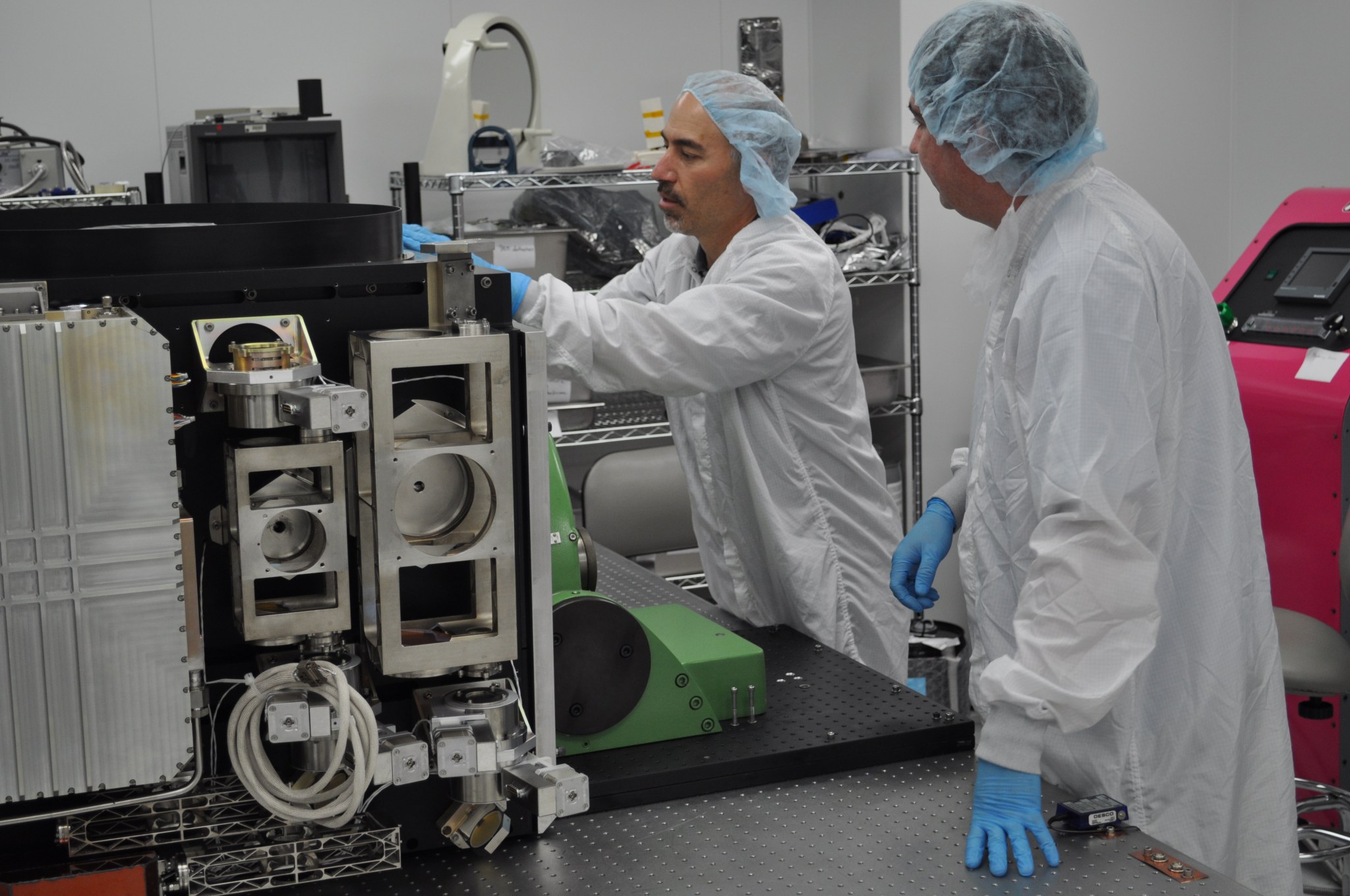NASA’s CATS: A Launch of Exceptional Teamwork
There aren’t enough people on NASA’s Cloud-Aerosol Transport System (CATS) team to field both sides of a football scrimmage, but there are enough to build and test the Earth-observing instrument, bound for the International Space Station on Dec. 16.
Consisting of 19 people, including three high school students, the CATS team designed and built a new cloud and aerosol measurement instrument. The instrument will measure clouds, volcanic ash plumes and other aerosols, or airborne particles, from aboard the space station for up to three years, with unprecedented capabilities. CATS will be the first to use three-wavelength laser technology to measure aerosols in order to improve the accuracy of climate change models.
But, there was a challenge. CATS is also a technology experiment for the intended to show innovative science can be done, for a low cost with quick turnaround. The experiment had limited funds and had to be built in two years—a much shorter timeline and smaller budget compared to typical spaceborne Earth-observation satellites. To accomplish the scientific objectives on time and within the budget, the CATS project required a hardworking, savvy group of scientists and engineers.
“Pick the right people, trust them, empower them, then trust them again, and you’ll be amazed,” said Matt McGill, principal investigator of CATS from NASA’s Goddard Space Flight Center in Greenbelt, Maryland.
Great Things Come in Small Packages
About the size of a refrigerator, CATS is inherently different from other space lidar projects that send laser pulses to Earth and measure the reflected light bounced back to the instrument.
For instance, a satellite mission flying in space requires a larger team of people and significantly greater budget than CATS. Classified as a technology experiment, not a mission, CATS is an addendum to the space station and is operated with a smaller budget and team.
“We’re a pretty tight knit group. That really promotes good teamwork, with the single goal of doing the best we can to produce good data products for the science community,” said John Yorks, science lead of CATS at Goddard where the instrument was constructed and tested.
The smaller team provided advantages for CATS, Yorks said. Team members could communicate directly with one another, especially at the weekly meetings. Aside from a few people based at NASA’s Langley Research Center in Hampton, Virginia, that work on CATS algorithm development, many of the team members sit on the same hall at Goddard. Each team member also had all the responsibility for a task so there were fewer opportunities for a duty to be overlooked— and more opportunities for trust and autonomy.
“With a smaller team, there are fewer places for the ball to get dropped,” said Yorks. “We are able to focus on individuals and specific tasks and keep continuity because we’re the only ones working on it.”
A League of Extraordinary Expertise
The team is stocked with NASA scientists and engineers with decades of experience. Dennis Hlavka, who has been at Goddard for over 26 years, worked on calibration for CATS, similar to his tasks on larger missions like Geoscience Laser Altimeter System (GLAS) on the ICESat satellite. Bill Hart has worked at Goddard for 36 years, and contributed his knowledge in algorithm development for the CATS instrument. Hart retired in the fall, making CATS his last project at Goddard.
“We all worked with each other on past airborne instruments so we know each other and each other’s strengths. That helps us utilize people’s skills to achieve a successful mission,” said Yorks, who previously worked with McGill on similar aerosol measuring missions.
The CATS team also includes younger members, including early career scientists, recent college graduates and bright high school interns. The small team allowed younger members to step into roles with more responsibility and with mentorship from more experienced NASA personnel.
“There were a lot of young folks that came along, and they rose to the occasion. It was good to help them along and teach them so they get an understanding,” said Billy Mamakos, who is the mechanical lead for CATS and has been at Goddard for over 30 years.
Mamakos and Stan Scott, the project’s Instrument Manager with over 25 years of experience at Goddard, worked with three high school students, two of whom were on a robotics team that Scott manages. The students helped with the mechanical design for the ground support equipment, onboard software development that controls the mechanisms on CATS, integrating and testing the optical and mechanical components of CATS and testing the instrument at Johns Hopkins Applied Physics Laboratory in Laurel, Maryland.
There’s A First Time For Everything
CATS provided new experiences for several team members. CATS is the first mission that Yorks serves as Science Lead. Beth Paquette, who has been at Goddard for four years in the electronic parts and packaging engineering department, became laser-user certified so she could help with boresight, or making sure the instrument’s lasers are pointing where expected.
“Working on CATS has been an incredible experience and a great responsibility,” said Patrick Selmer, who has been at Goddard for two and a half years after graduating from Plymouth State University in Plymouth, New Hampshire. He works closely with Yorks and McGill and programs commands for the instrument and processes data. CATS is the first spaceborne mission for Selmer and many team members.
The experiment is also Goddard’s first Earth science instrument to be installed on the space station. With the condensed budget, timeline and team, the CATS experiment is forging a pathway to a low-cost, streamlined approach to developing station science payloads that provide critical scientific data.
When the cloud-aerosol instrument launches to the International Space Station on SpaceX’s fifth commercial resupply mission this month, it will be an ode to great science—and teamwork.
“Success definitely wasn’t one individual. It was a group as a whole. We all worked well together,” said Mamakos. “It’s huge. You can’t overestimate the value of the team.”



























